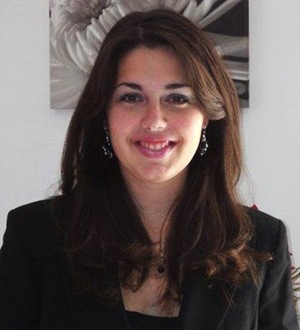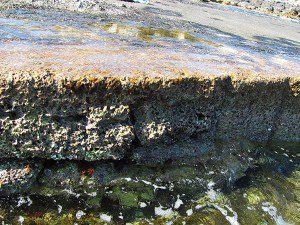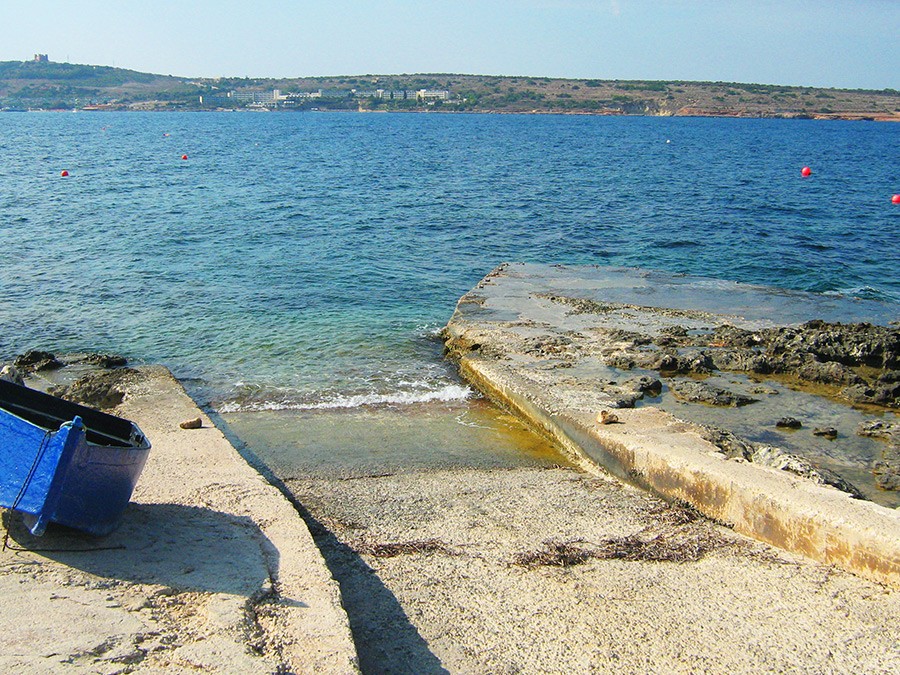
The marine environment needs to be conserved because all enjoy it in summer for leisure and fishermen depend on it for their livelihood. Our rocky shores also hold a unique ecology and it must be studied as a whole to understand how a seemingly insignificant crab or limpet can affect other species we might consider more important.
Our natural environment can be likened to a puzzle having thousands of pieces. If one piece is removed or changed, it will result in a different or incomplete picture. Jetties are artificial structures, in an otherwise natural matrix of rocky shore habitat, which add a new piece to the puzzle. They are built at right angles to the shore and are much smoother than natural rock. These differences are expected to change the environment and species living there. Leanne Bonnici (supervised by Dr Joseph A. Borg and Prof. Patrick J. Schembri) studied these jetties to understand how they would affect the big picture.
Bonnici studied three sites on the northeastern coast of the Maltese Islands (Little Armier, White Tower Bay and Għajn Żejtuna). The organisms on jetties in these areas were sampled from the mediolittoral zone — that part of the shore that is regularly submerged and exposed to the air. Sampling showed that the most abundant algae were low-growing green algae (Cladophoropsis sp.), and a red alga (Jania rubens). The algae serve as a source of food and shelter to other species.

The most common animals were crustaceans, molluscs, and polychaetes. Polychaetes are worms that possess lots of hair-like structures (chaetae). The most common polychaetes were small voracious predators a few millimetres in length. The diverse crustaceans included small cone shaped barnacles (Chthamalus spp.), which spend most of their life attached to rocks. Other abundant crustaceans included minute shrimp-like swimming animals known as amphipods (Hyale sp. and Ampithoe sp.) that are typically found amidst algae. The molluscs recorded included different species of limpets Patella spp., as well as the chiton Acanthochitona sp.; all of these are usually found attached to the substratum, although they do move to graze on algae.
Bonnici found that jetties share some species with rocky shores; however, jetties always had a lower diversity and fewer numbers of individuals living on them. Therefore one can conclude that jetties cannot replace natural rocky shores.
Keeping to the puzzle analogy, if we know how modifying a ‘piece’ of the environment changes the other pieces, it will help maintain the whole picture. This study will help better manage how jetties affect organisms and make the most out of these artificial structures.
This research is part of an M.Sc. in Biology at the Faculty of Science. It was partly funded by the Strategic Educational Pathways Scholarship (Malta), which is part-financed by the European Union – European Social Fund (ESF) under Operational Programme II – Cohesion Policy 2007-2013, “Empowering People for More Jobs and a Better Quality Of Life”.





Comments are closed for this article!